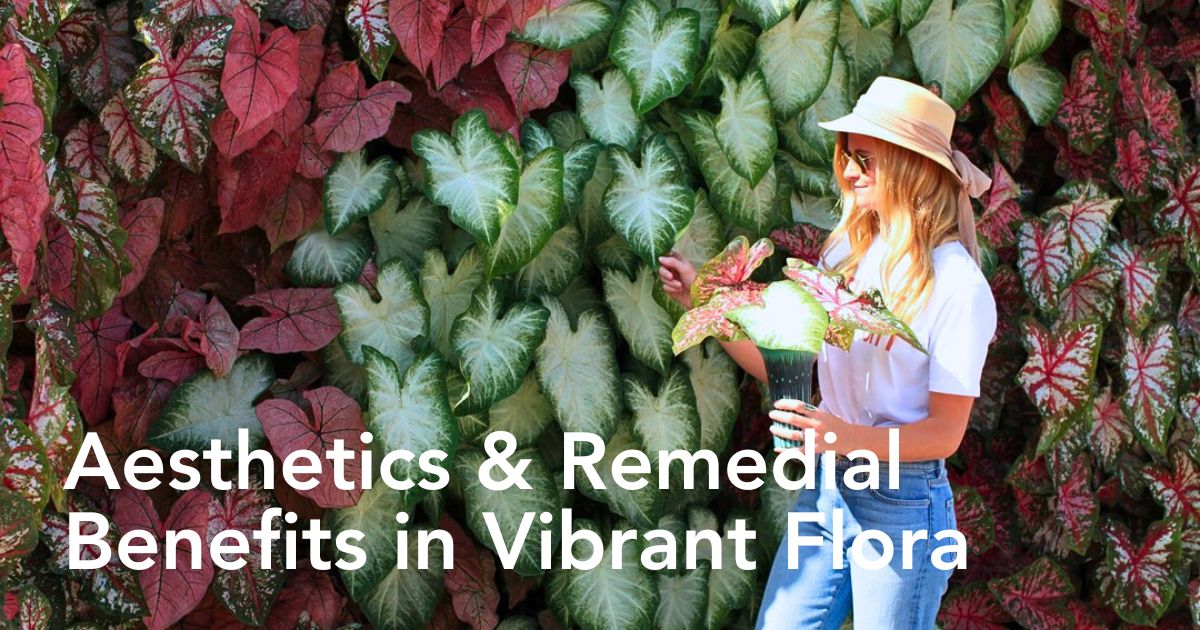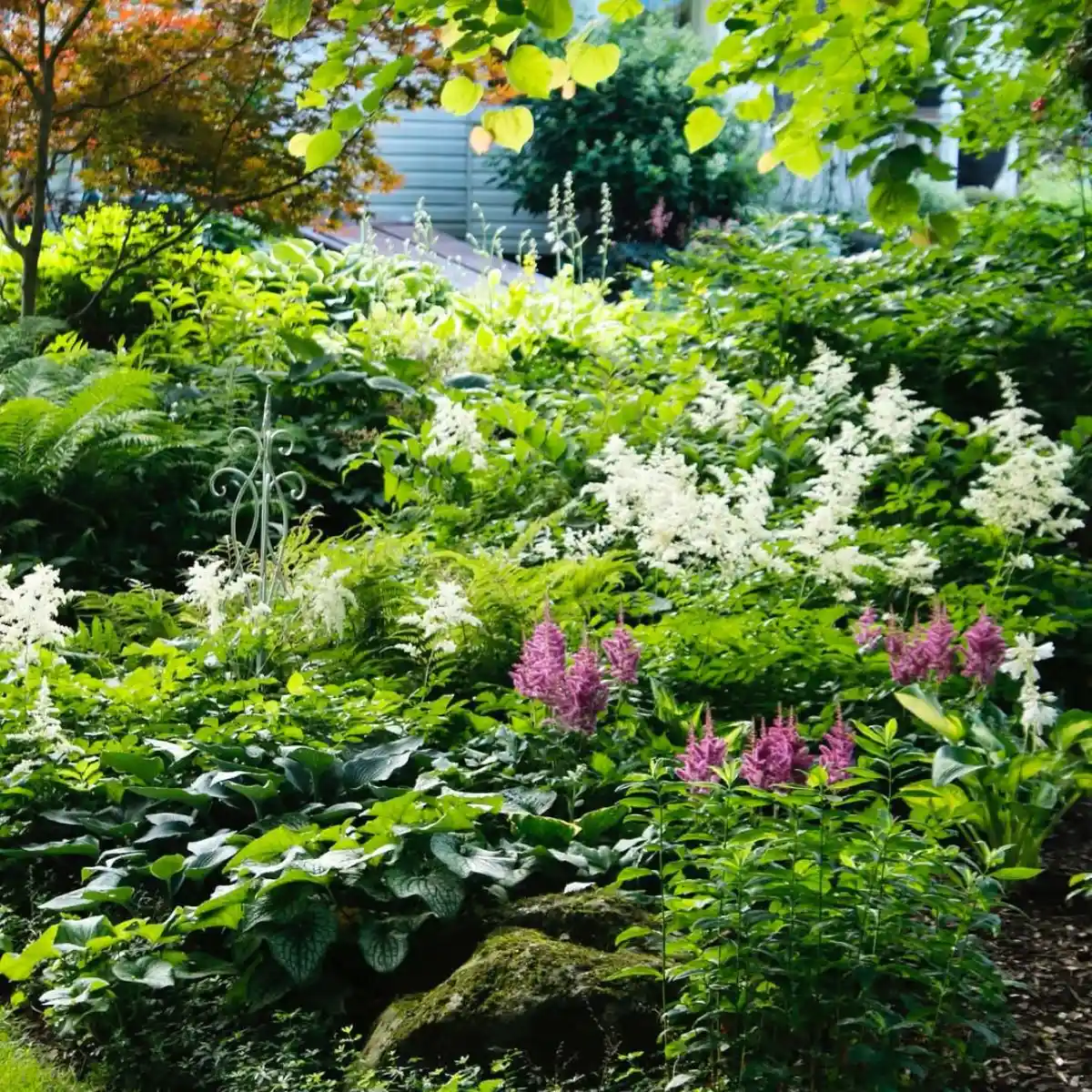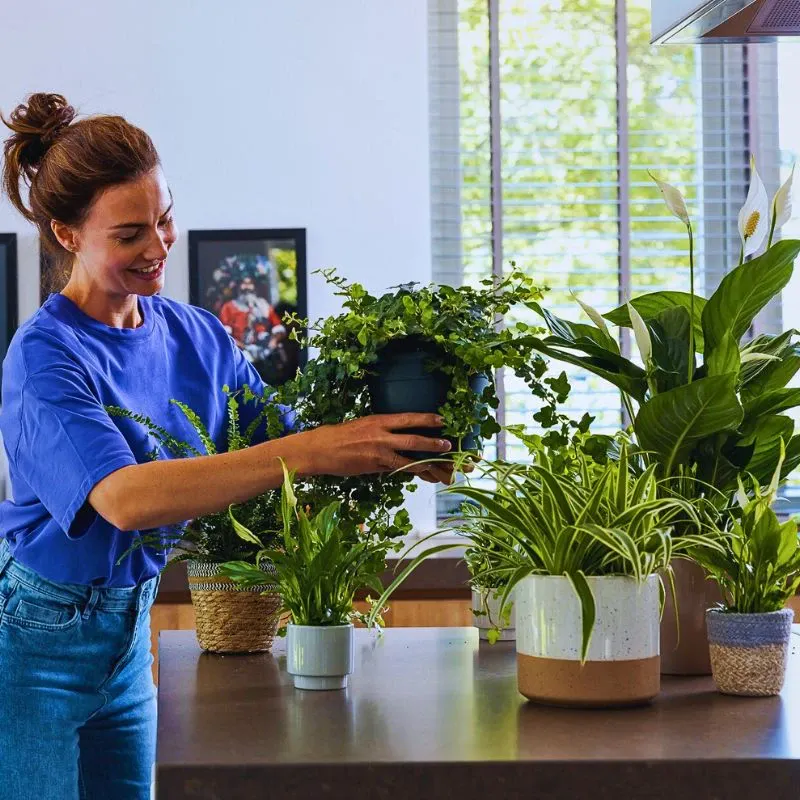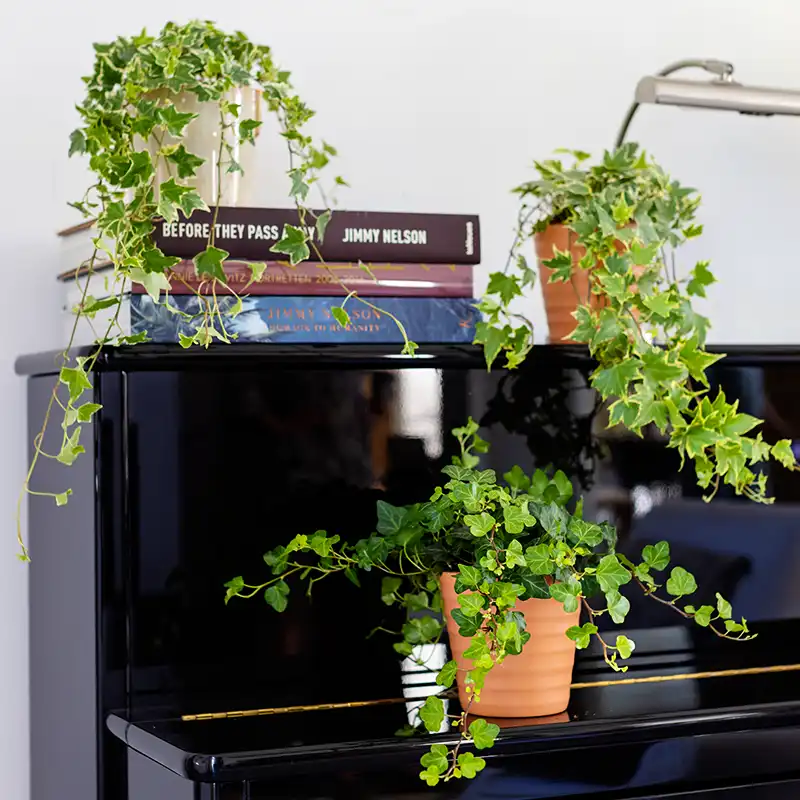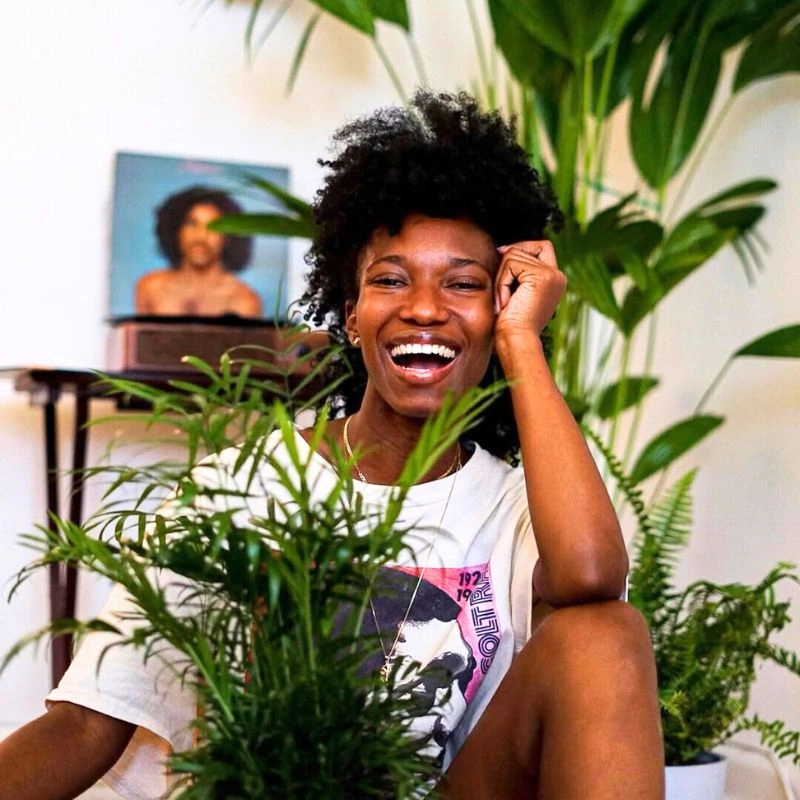Living walls, those vertical gardens that convert blank spaces into beautiful ones, are more than just a design fad. They are a trend that shows people’s growing desire for a connection with nature; a yearning for serenity in the middle of an urban jungle. More than their aesthetic appeal, they have lots of benefits, including improved air quality, reduced noise pollution, and also enhanced mental well-being.
The true delight in a living wall, basically, lies in its ability to create a sense of calm and tranquility, a therapeutic refuge that nourishes the soul, and general well-being. To achieve this, careful plant selection is vital. Picking plants that are not only renowned for their therapeutic qualities but also their color and visual appeal not only boosts the ambiance of a living wall but also enhances its general palliative nature.
Color and Its Dynamics in Ideal Living Walls
Color is essential in creating an effective and appealing living wall. Carefully curating a palette of colorful plants, in essence, produces a living wall that improves the aesthetics of a space, while also, providing a therapeutic, revitalizing atmosphere for the occupants. The deliberate use of colorful plants, therefore, significantly enhances the appeal and therapeutic benefits of a living wall.
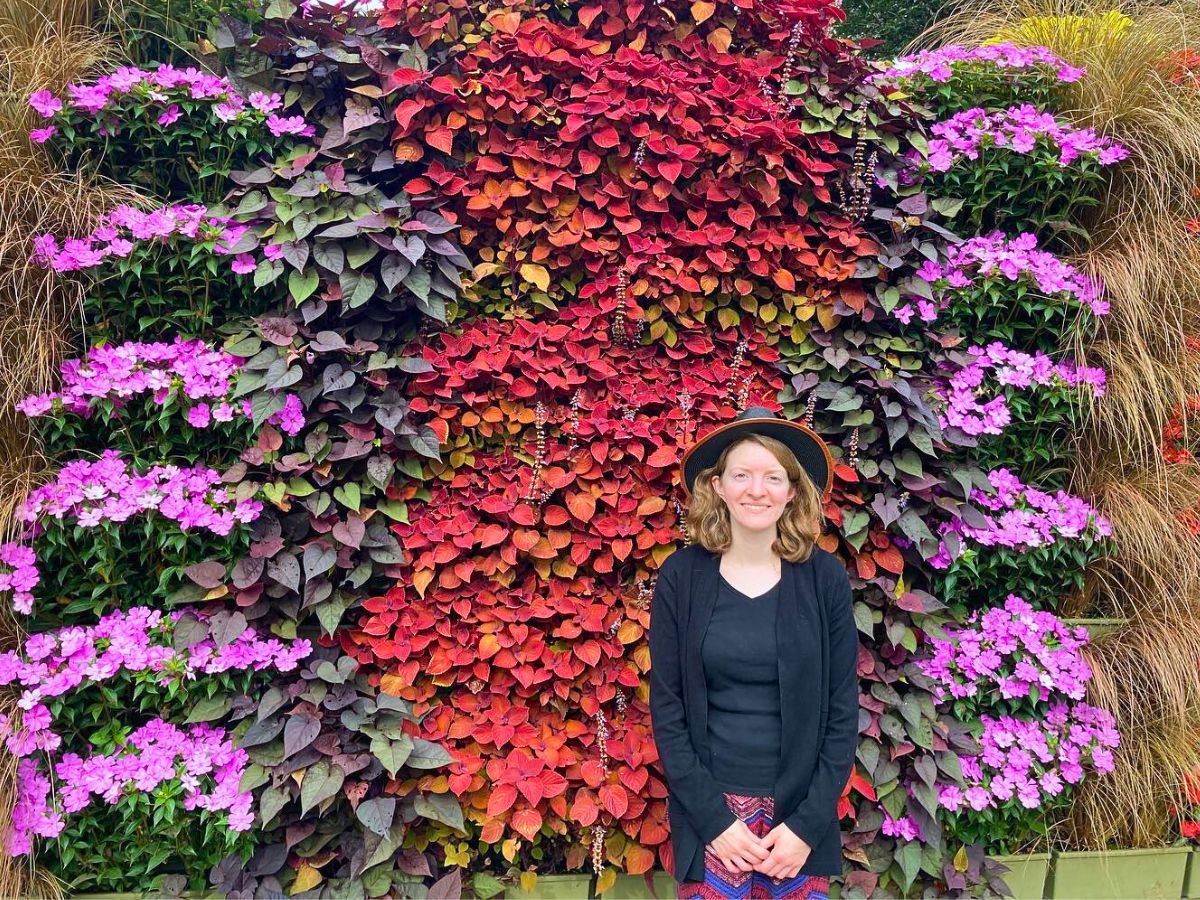
Photo by @livingwall
Incorporating a diverse palette of colors in a living wall, also, adds visual interest and dynamism to the space. Different hues, ranging from bright greens to striking reds, purples, and blues, create a visually captivating display that often transforms a plain wall into a pleasant focal point. The use of different colors, also, has a deep impact on people’s emotions and psychology. Certain colors are, for instance, known to arouse specific moods and feelings. For instance, cool colors like blues and greens can have a calming and soothing effect, while warmer ones like reds and oranges can be energizing and uplifting. This is, particularly, true for workplaces. Choosing plants with complementary color schemes can, also, set the desired mood and ambiance in the living space.
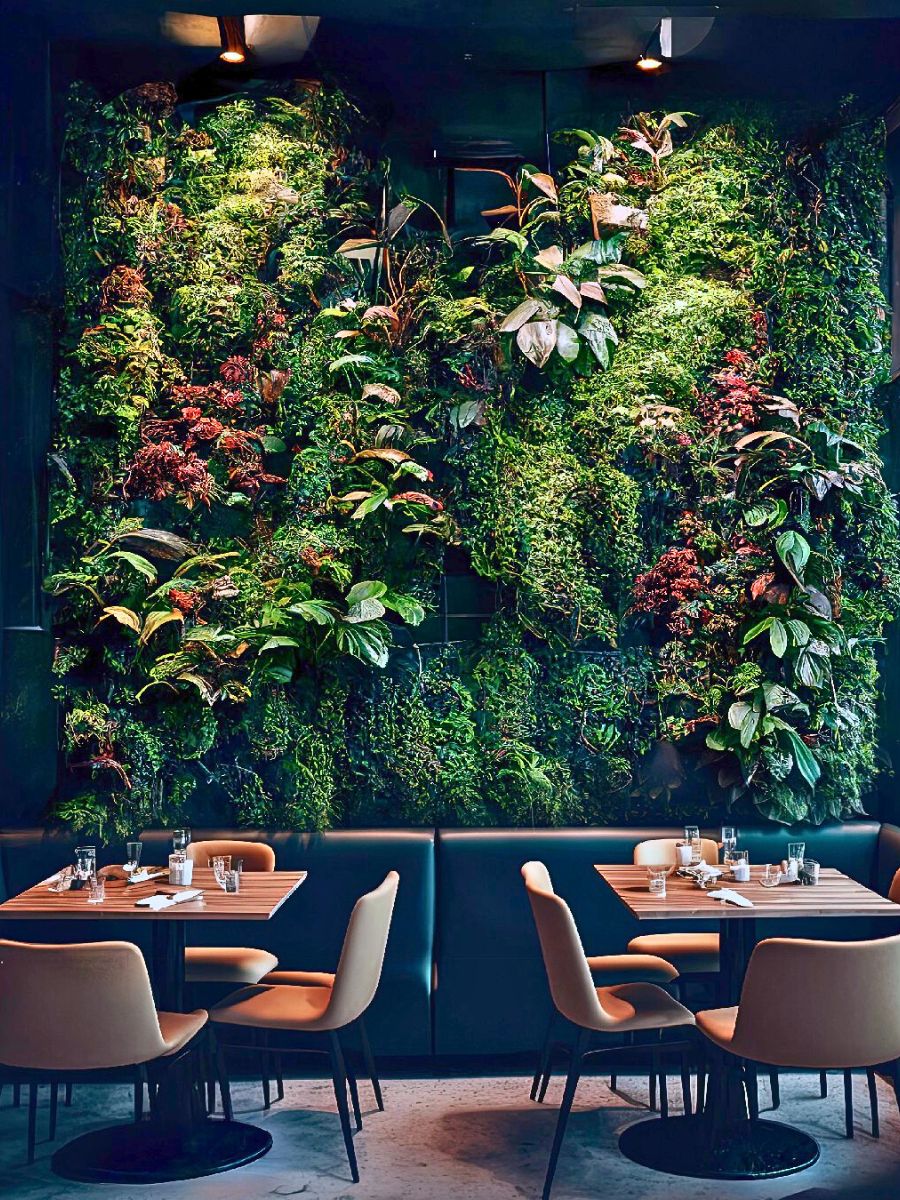
Similarly, the presence of visually stimulating colorful plants in a living wall can have noticeable therapeutic benefits. These colors can influence stress levels, cognitive function, and overall mental health. For example, studies have shown that exposure to green plants helps reduce anxiety and improve concentration, while the presence of flowers in different hues boosts mood and creativity. What is more, incorporating a range of plants with different seasonal color changes can add a layer of visual interest and vitality to the living wall. The changing hues throughout the year produce a continually changing display, keeping the space fresh and pleasing.
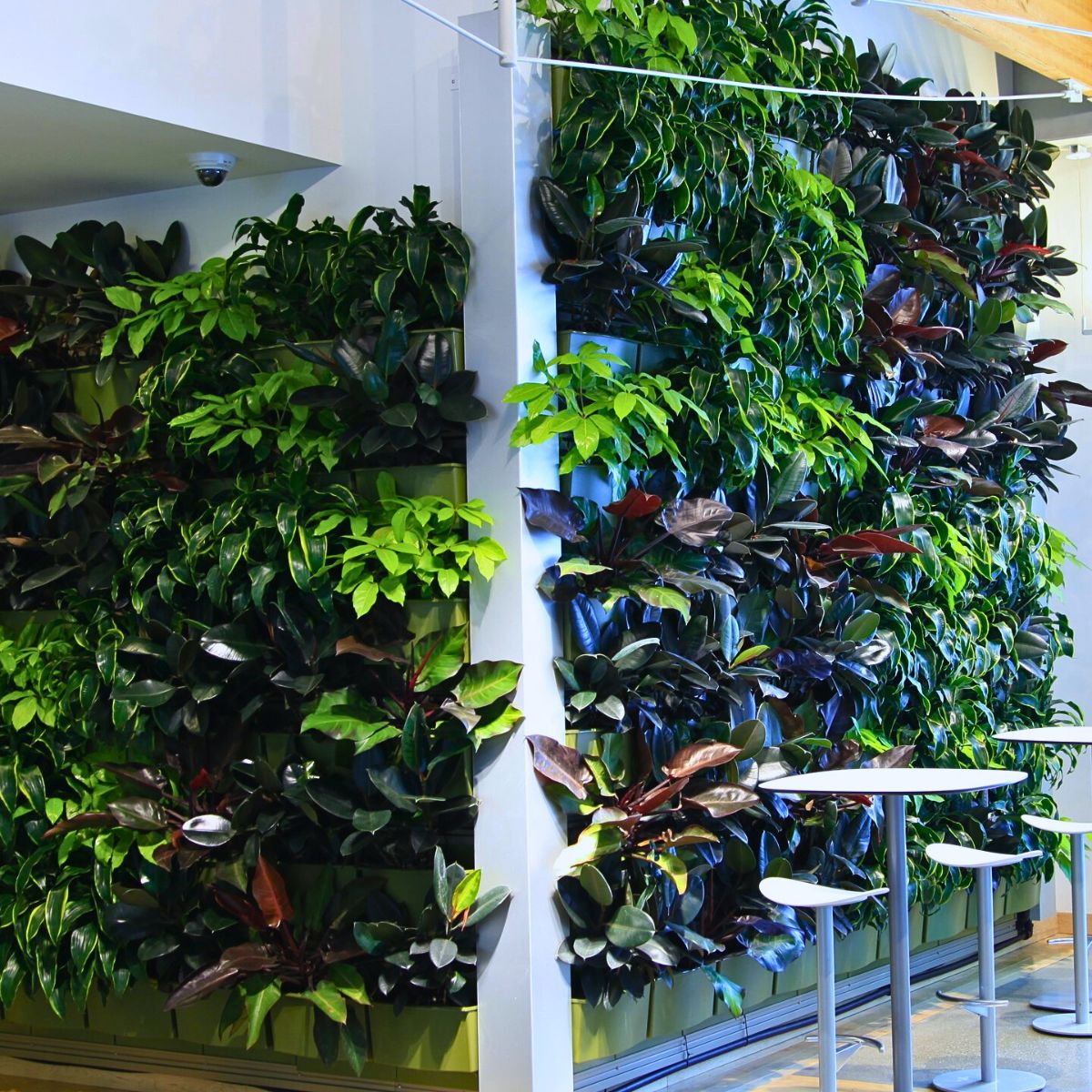
Additionally, living walls are a key element of biophilic design. These designs aim to integrate plant and natural elements into built environments. Thus, the use of diverse, colorful plants in a living wall reinforces this connection to nature. These colorful plants provide a sense of calmness, rejuvenation, and general well-being.
You can also check out these 15 Pink Houseplants That Add a Pop of Color.
Ten Plants That Enhance the Therapeutic Aesthetics of Living Walls With Their Color
Many living and working spaces often seem boring when devoid of nature. This explains why the concept of living walls arose; to improve these spaces. Even so, while these vertical gardens ably add the required life into these settings and positively impact mental and physical well-being, the colorfulness of the plants used, also, elevates the ambiance while concurrently enhancing the therapeutic quality.
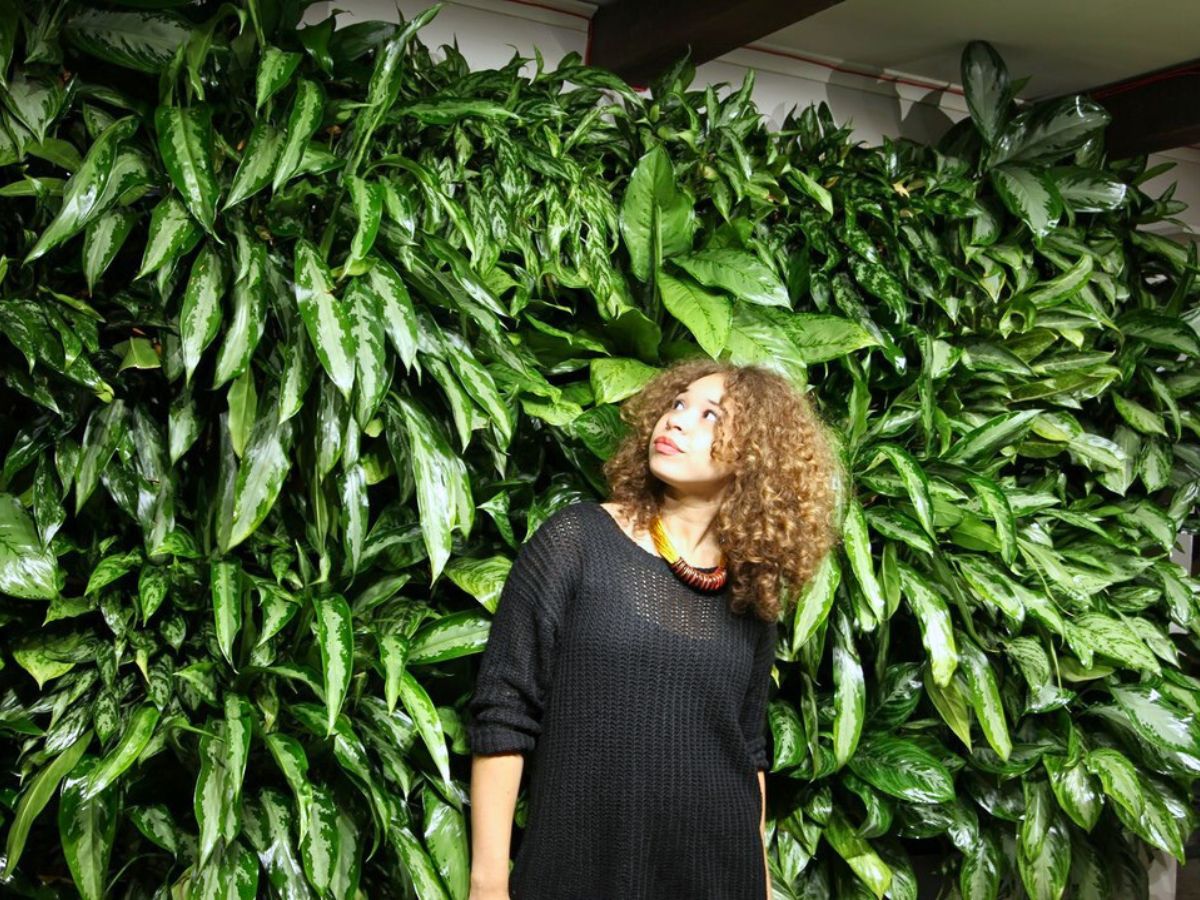
So, here are ten great examples of the plants you may want to consider for your living wall.
1. Blue Fescue Grass (Festuca Glauca)
Blue fescue grass is a plant that comprehensively brings out the serene ambiance associated with the color blue. This cool-season ornamental grass possesses delicate, wispy blue foliage, which carries a calming presence, adding it to the living wall. Its soft, airy texture creates a sense of tranquility, reminiscent of a moment when a gentle breeze whispers through a meadow. Blue fescue's bright azure hues are, also, known to have a gentle effect on the eyes. This is another quality that promotes peacefulness and relaxation.
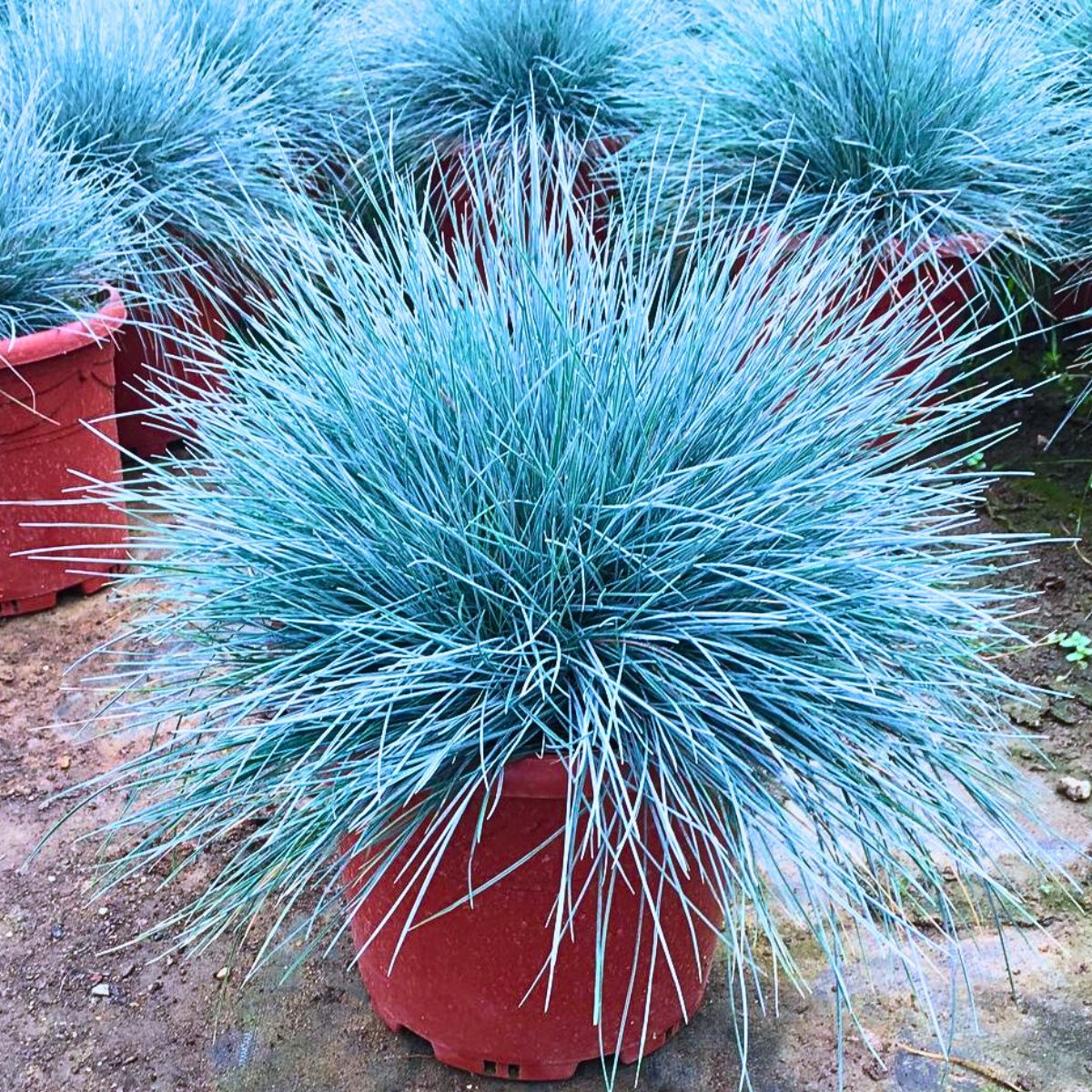
2. Golden Creeping Jenny (Lysimachia Nummularia Aurea)
This trailing plant has bright, cheerful greenish-yellow foliage that adds a lively splash of sunshine to a living wall. Yellow color is, often, associated with happiness, optimism, and energy, therefore, this plant's yellowish hue, also, enhances a cheerful and uplifting ambiance. Golden Creeping Jenny’s cascading growth habit, additionally, adds a dynamic element, as it mimics the flow of nature. Its low-maintenance nature makes it an ideal choice for busy growers.
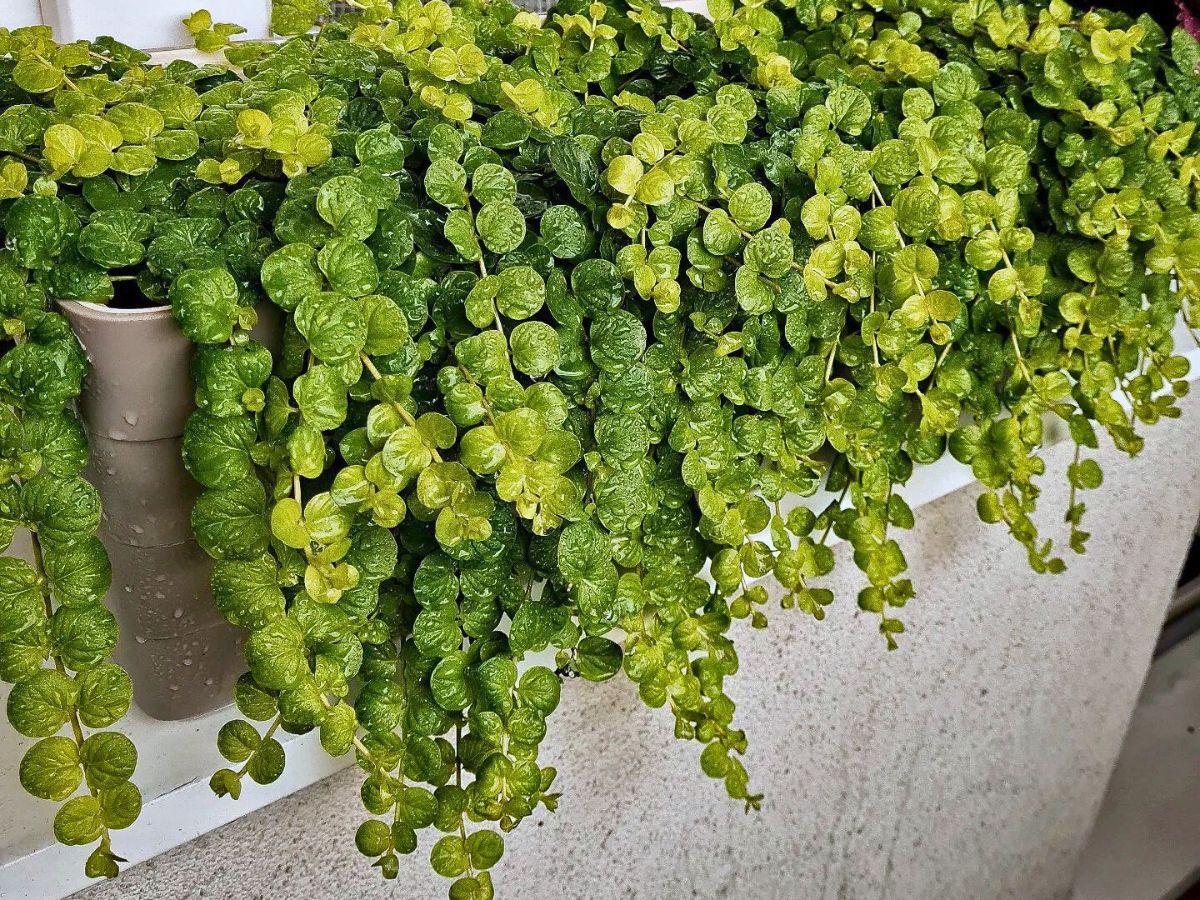
3. English Ivy (Hedera Helix)
English ivy, an evergreen foliage, is yet another classic choice for living walls. Its deep green color embodies nature's tranquil repose, thus posing a sense of grounding and stability. Plus, the plant's ability to climb and cover surfaces arouses a sense of enclosure, thus creating a cozy and intimate atmosphere. The fact that it has air-purifying properties further enhances its therapeutic value.
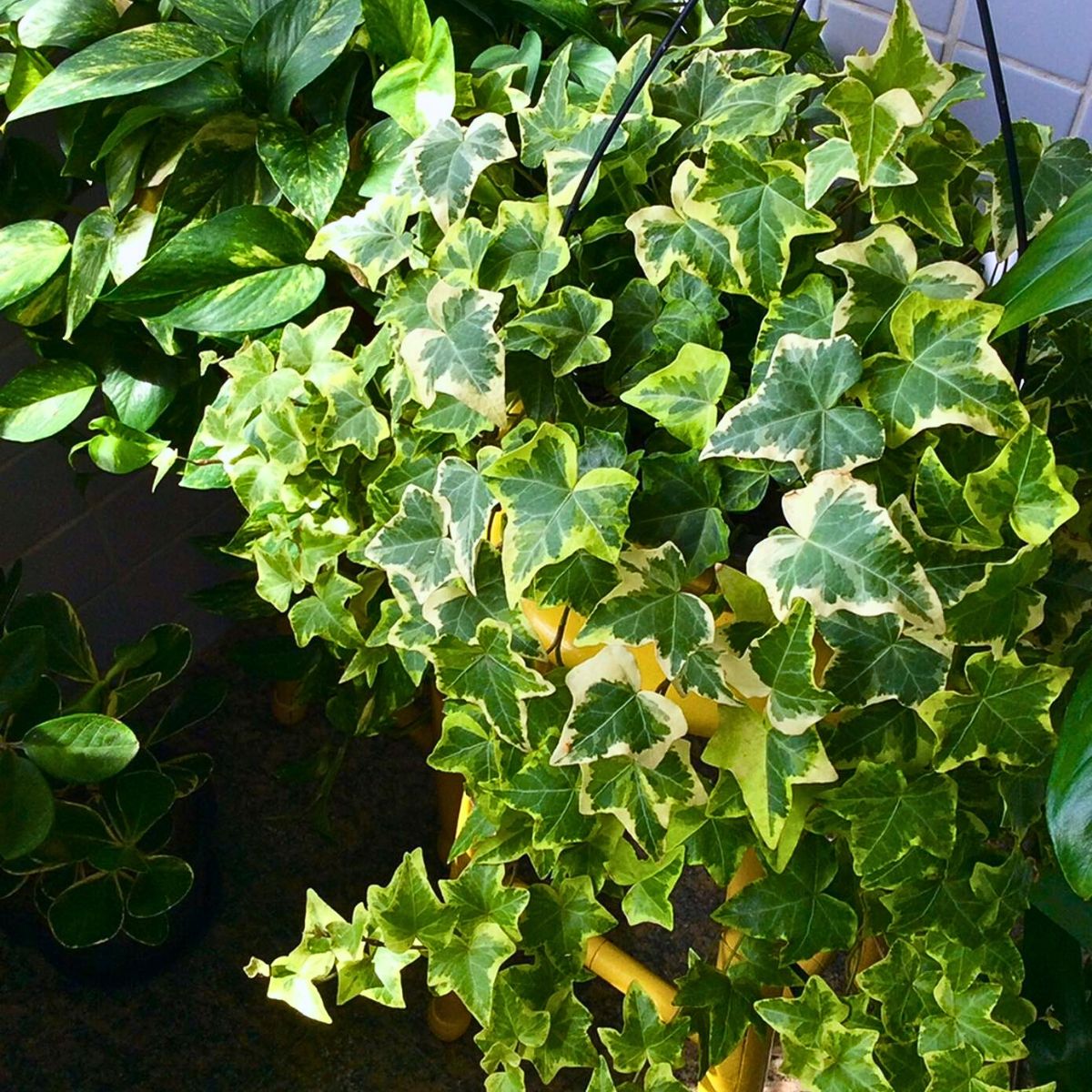
4. Purple Heart (Tradescantia Pallida)
If you're looking to add some drama to your living wall, then the purple heart is one spectacular plant that you'd look for. With its vibrant purple foliage, this plant brings a sense of intrigue, as well, to the living wall. The color purple is associated with royalty, spirituality, and creativity and inspires wonder and imagination. In addition to its intriguing characteristics, this plant’s unique foliage texture, with its silvery sheen, is also ideal for adding a much-needed dash of sophistication. It, therefore, is a standout choice for living walls in modern living spaces.
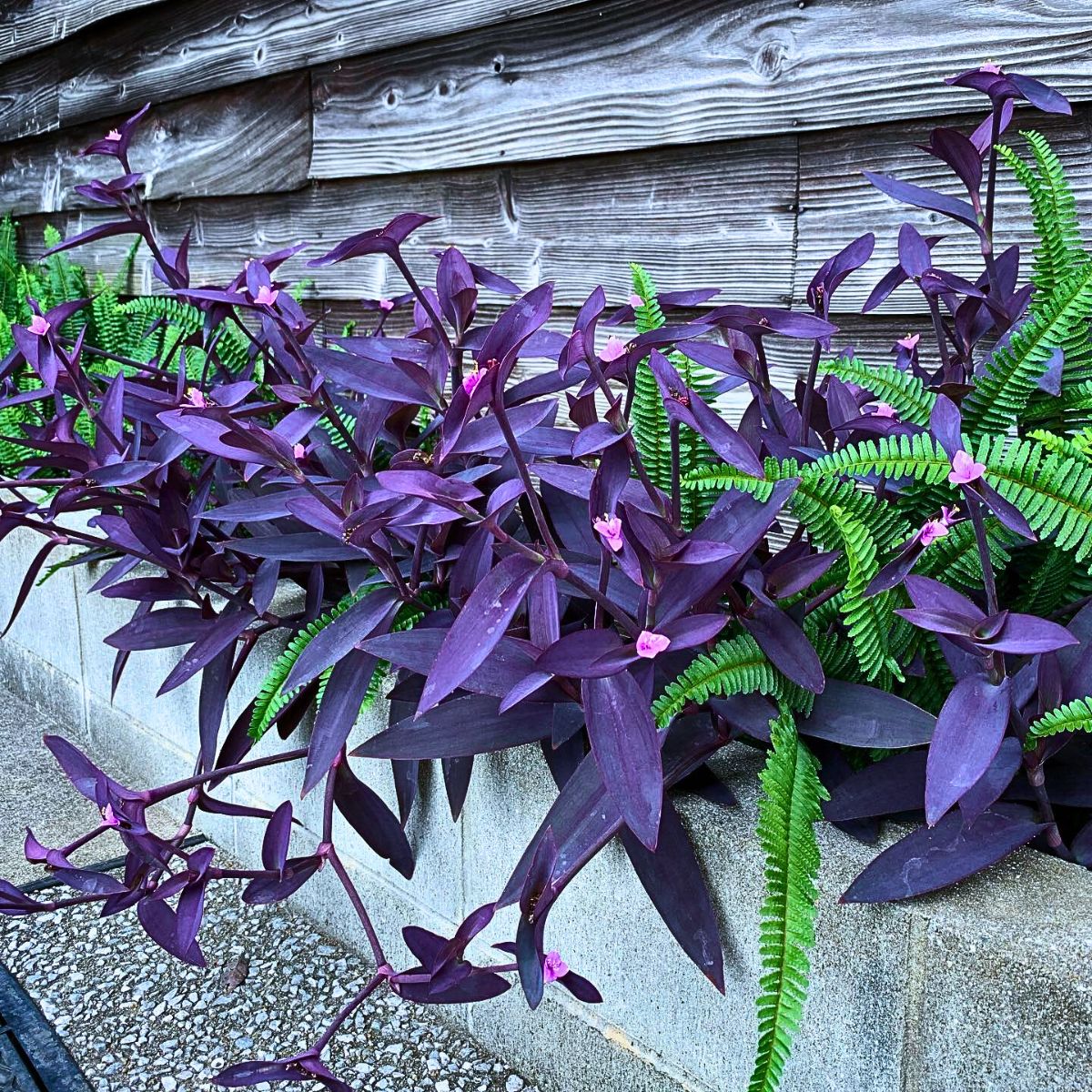
5. Pink Polka Dot Plant (Hypoestes Phyllostachya)
A charming plant with delicate pink-spotted foliage, Hypoestes phyllostachya is known to infuse a hint of whimsy and romance into the living wall. The color pink is linked to love, compassion, and nurturing. It is often, a color that creates a warm and welcoming atmosphere. Pink polka dot’s compact size and delightful foliage would, therefore, make it an ideal choice for smaller living walls, as it brings out a playful elegance to the space.
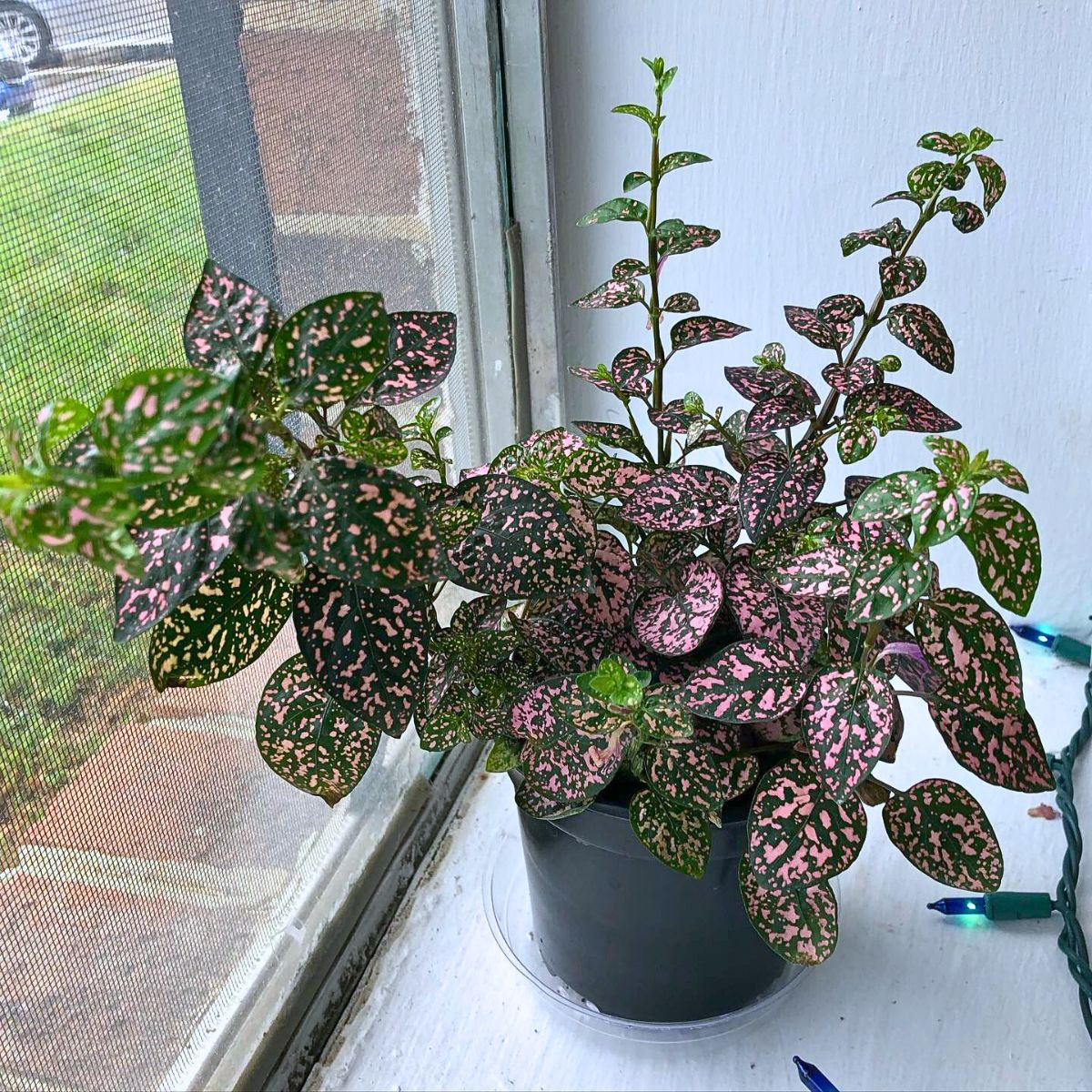
6. Red Coleus (Solenostemon Scutellarioides)
For more energetic living and working spaces, this lively plant — with its bold red foliage — brings energy and excitement. It is common knowledge that the color red is associated with passion, vitality, and courage, and stimulates motivation and creativity. As a result, with its striking foliage and intricate patterns, red coleus would be essential in adding a visual focal point that draws the eye and creates a sense of dynamism on the living wall.
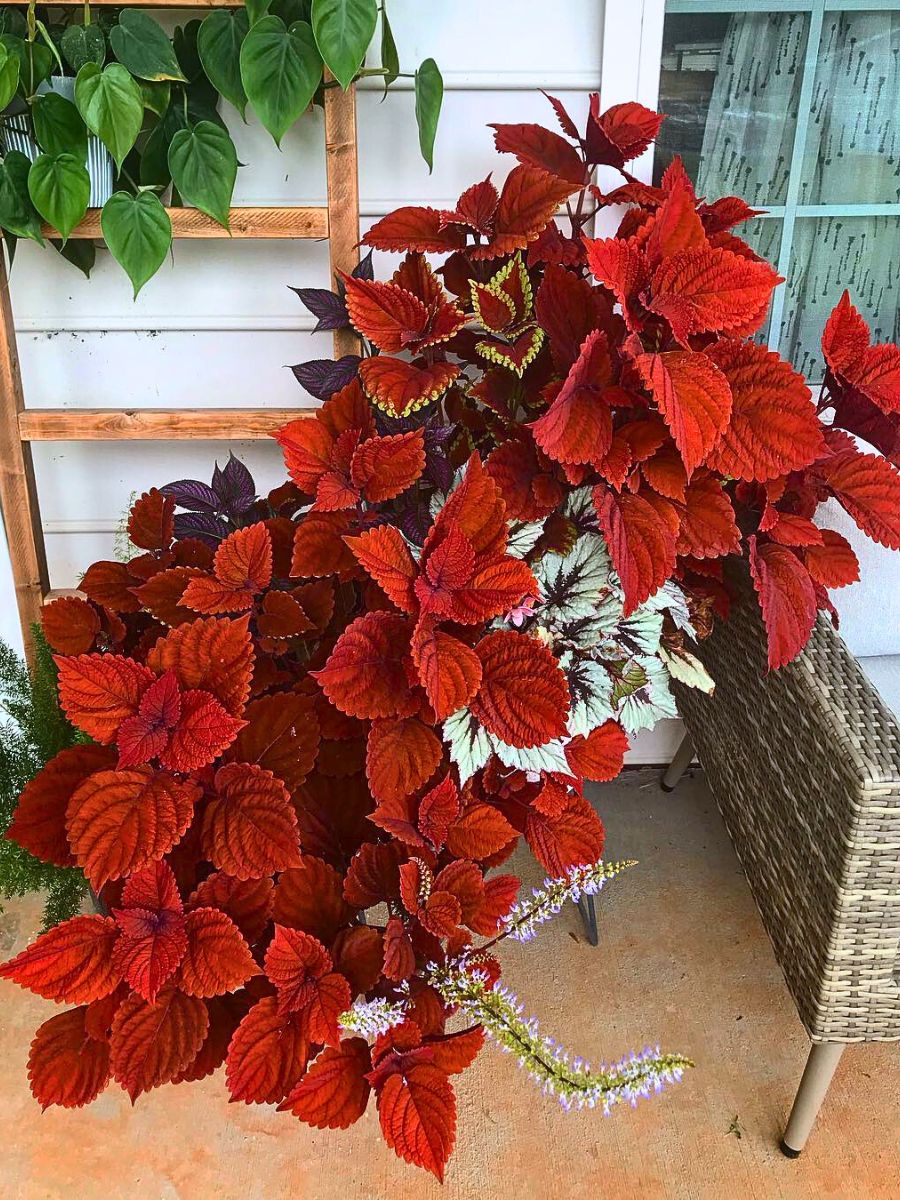
7. Nerve Plant (Fittonia Ssp. Red Anne)
Fittonia Red Anne, often referred to as the nerve plant, is another true showstopper for living walls. This plant has vibrant, veined leaves which come in shades of red, pink, and white, thus producing a mesmeric visual delight. The plant thrives in high-humidity environments; a quality that makes it a perfect fit for the microclimate of a living wall. Moreover, its delicate, sensitive leaves are believed to have a calming, almost meditative effect on observers, enhancing its therapeutic appeal.
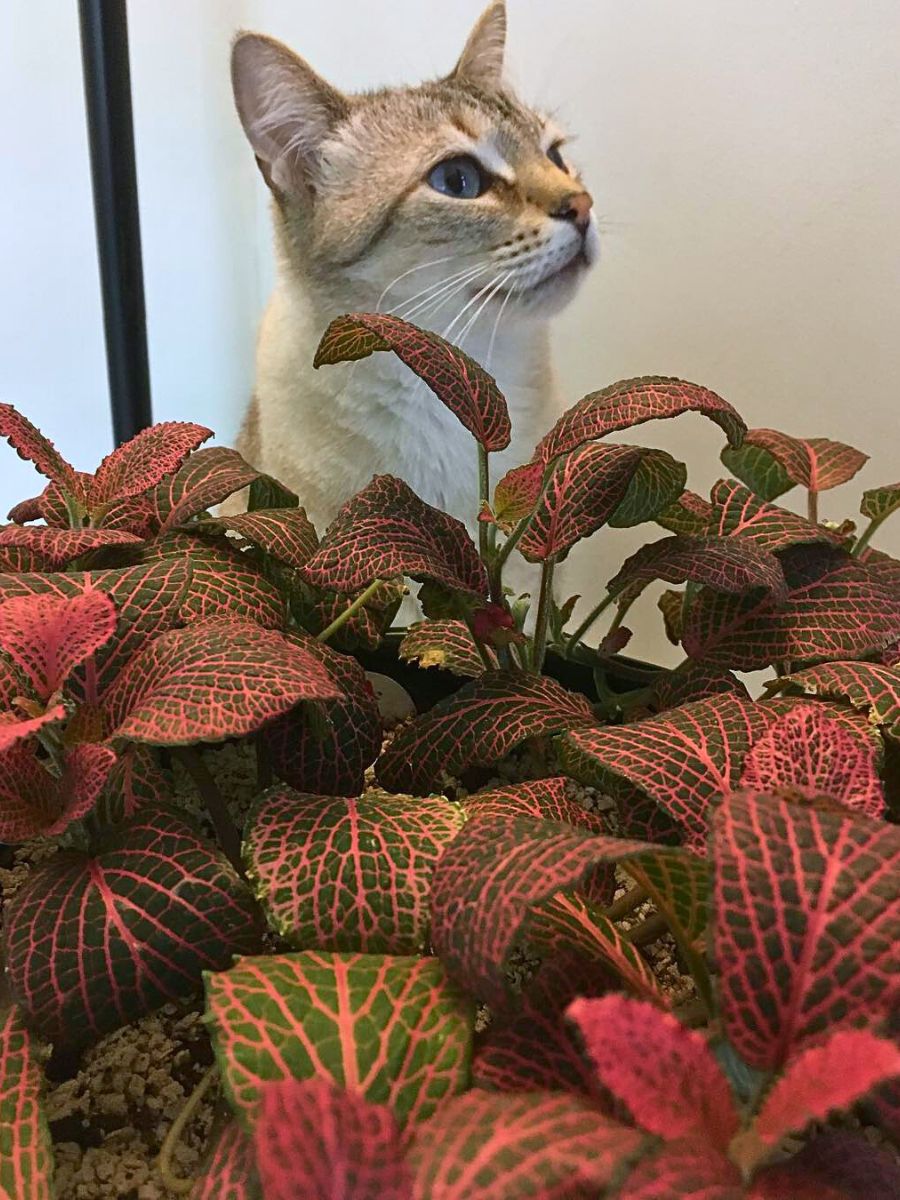
8. Variegated Wandering Jew (Tradescantia Zebrina Albo-Vittata)
This is an elegant plant, whose white-striped foliage, brings out a calmness and serenity, which peace of the mind is all about. Plus, it adds some level of sophistication to the living wall. Everyone knows that white is a color associated with purity, peace, and simplicity. In that context, this plant creates a calming and restful ambiance. Its trailing growth habit, also, brings a sense of flowing elegance, while its low-maintenance nature makes it a practical choice for those who are rather busy.
The 'Jew' part of the name has historical ties and is somewhat controversial today. It refers to the biblical story of the Wandering Jew, a legend about a figure condemned to wander the earth for eternity. This name was likely given due to the plant's vigorous and seemingly unending growth habit. However, many modern gardeners prefer to use alternative names like 'Inch Plant' or simply 'Tradescantia' to avoid the negative connotations associated with the original name.
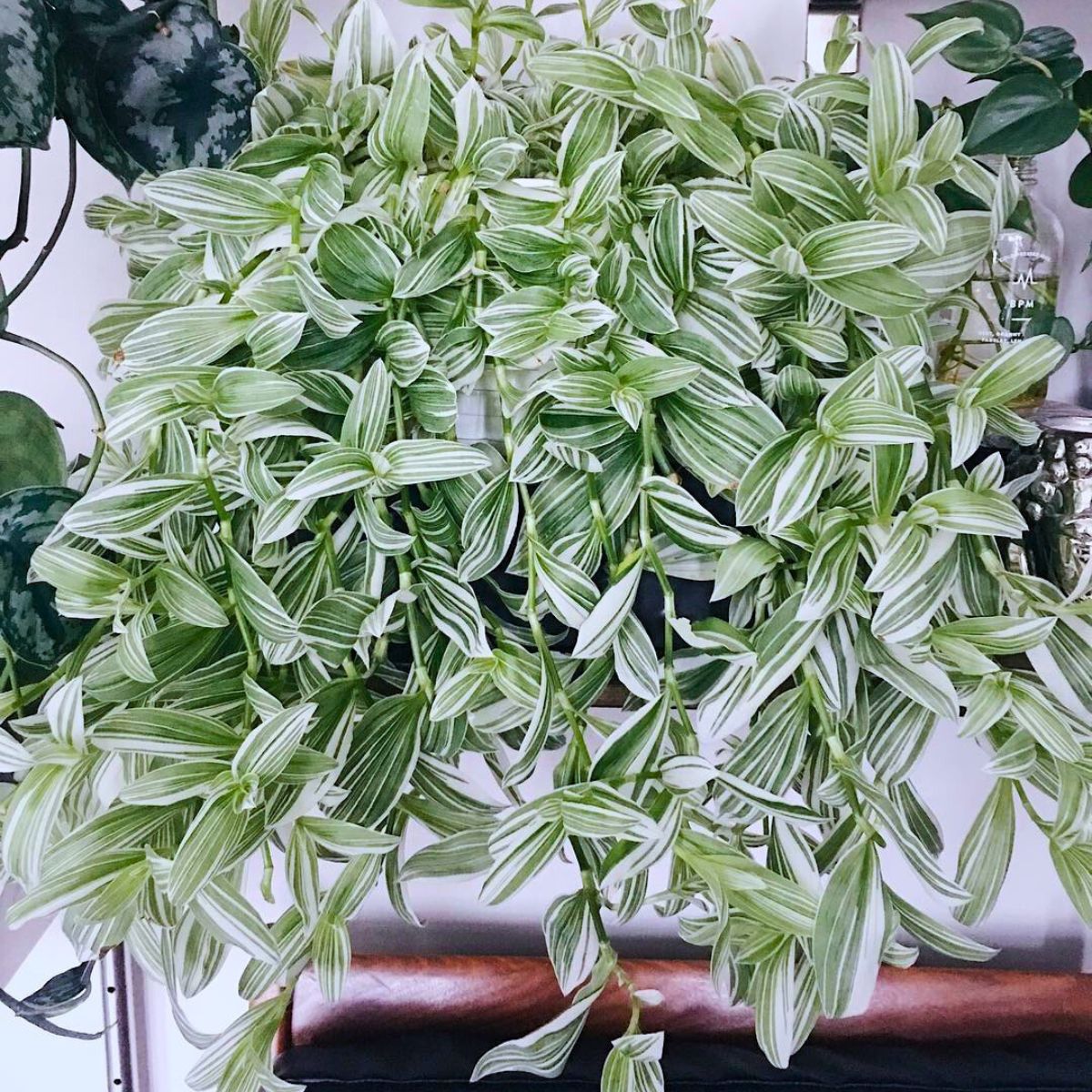
9. Caladium Strawberry Star
Yet another charming addition to the living wall, the Caladium Strawberry Star is a fancy-leafed, variegated caladium with light green, pink-speckled leaves and dark green veins and stems. It has large leaves that make it stand out. The leaves feature a bold, ruby-red center surrounded by a border of pink and green, making it one of those plants that showcase a truly attractive visual spectacle. Caladiums are known to thrive in shaded, humid environments. They are, therefore, an excellent choice for the sheltered conditions of a living wall. The plants’ bold, tropical aesthetic, also, injects an energizing and rejuvenating vibe into an indoor space.
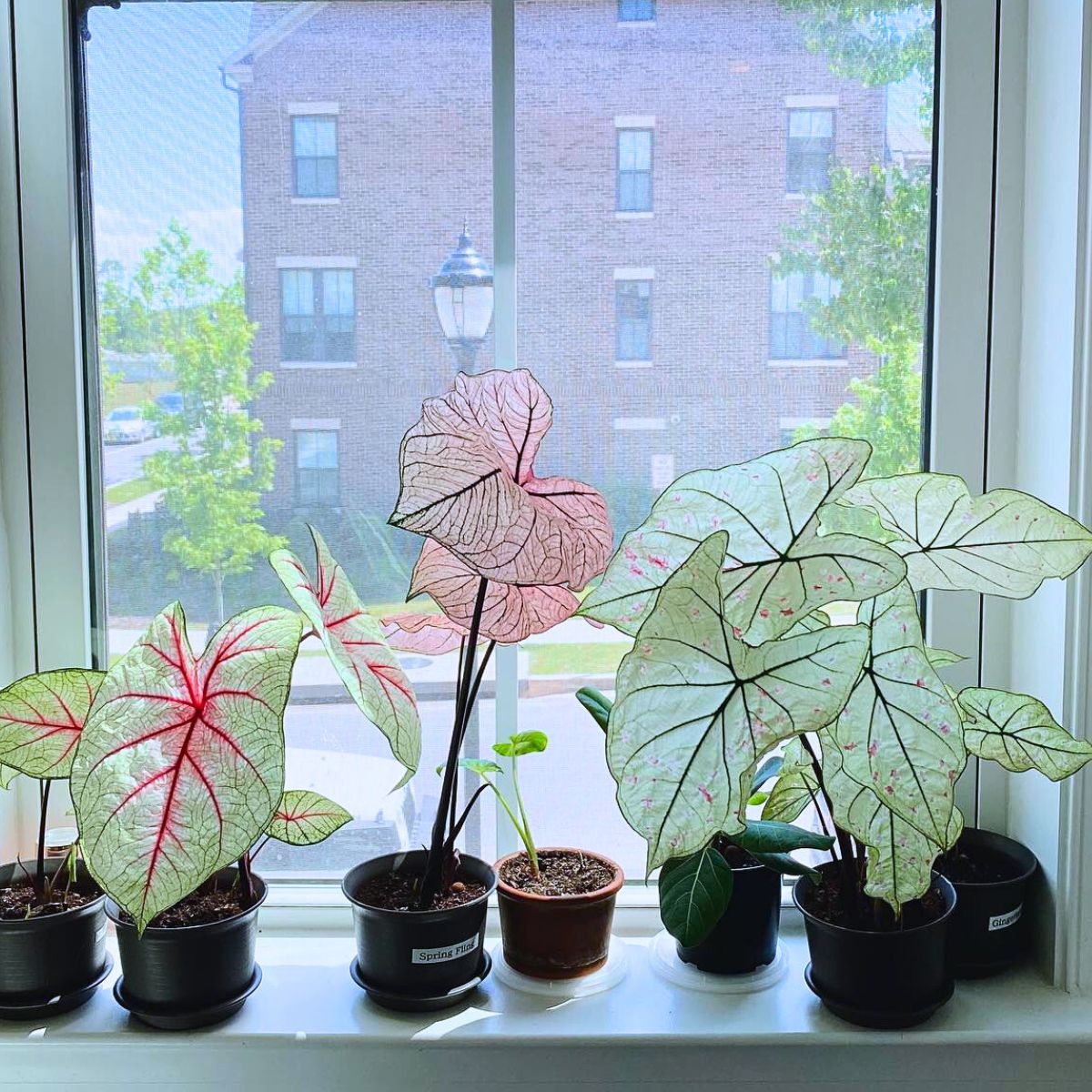
Photo by @je.seed
10. Marble Queen Pothos (Epipremnum Aureum)
To round up the list, the Marble Queen Pothos is, still yet, another versatile and visually appealing choice for living walls. With cascading vines adorned with variegated leaves that showcase a spectacular combination of green, white, and yellowish hues, this plant also possesses a beauty that enthralls. Generally, pothos are renowned for their air-purifying abilities, removing toxins such as formaldehyde and xylene from the environment. What’s more, their resilience and adaptability make them excellent low-maintenance options for creating a lush, therapeutic living wall display.
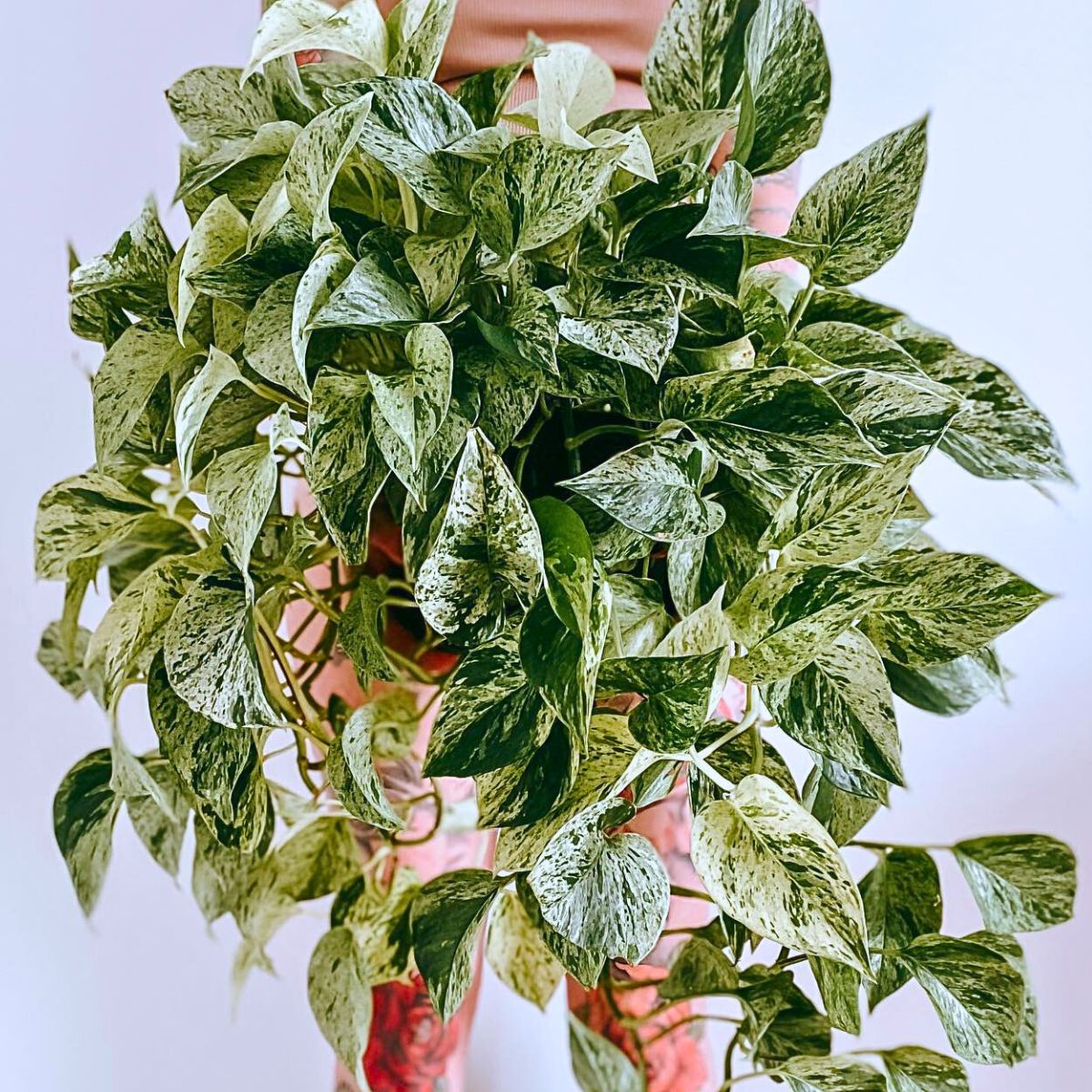
Beyond Their Aesthetics, Living Walls Have Therapeutic Benefits
The benefits of living walls extend far beyond their visual appeal. The presence of greenery in any setting has been scientifically proven to come with a host of benefits. Green plants reduce stress, improve mood, enhance cognitive function, and boost both physical and mental well-being. Also, the relatively simple act of tending to plants; be it watering, pruning, or simply observing their growth, can be a meditative experience that enhances a sense of mindfulness and connection with nature.
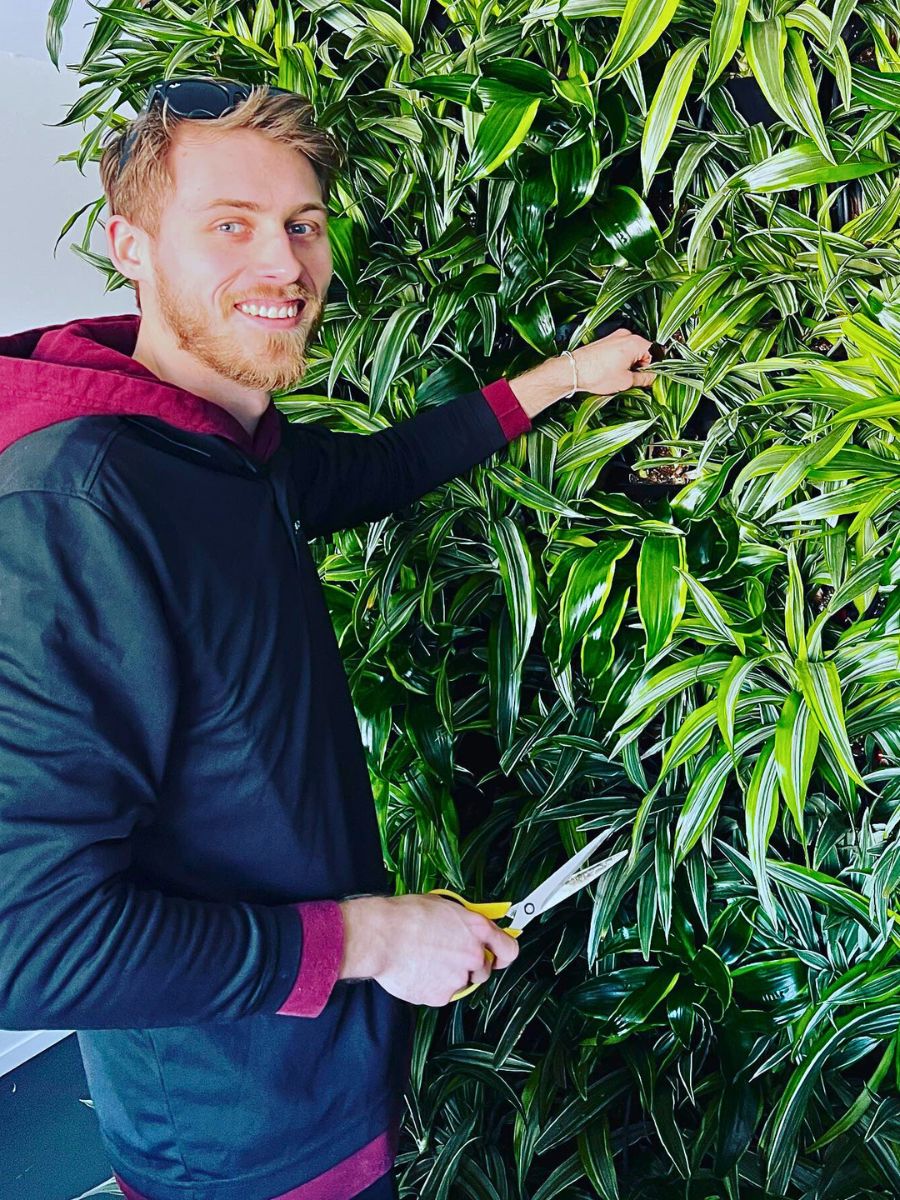
Creating an Ideal Living Wall to Harness Their Maximum Therapy
When selecting plants for a living wall, it is essential to consider not only their aesthetic appeal but also their ability to contribute to the overall therapeutic experience. Also, a careful selection of plants that resonate with the desired mood and aesthetic, can help create a living wall that is not only visually stunning but also a source of therapeutic well-being. There are, therefore, some key factors to consider when designing an ideal therapeutic living wall that you desire.
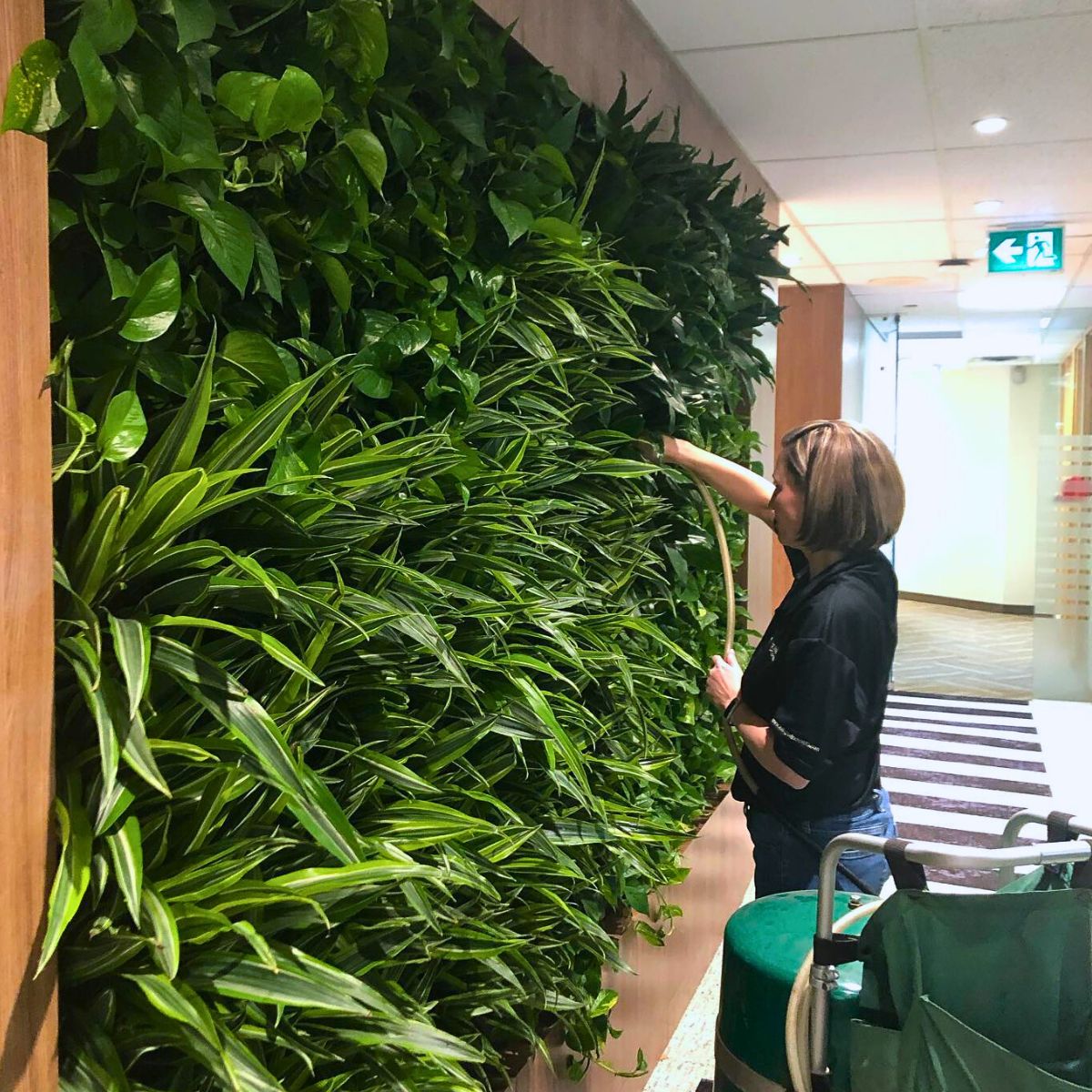
For starters, color harmony is vital. Choose a palette of plants that complement each other in terms of foliage color, texture, and growth habit. This pleasant blend creates a visually soothing and cohesive display. You could, also, include plants with soft, velvety, or unique textures that invite touch and exploration. This sensory engagement can have a calming, grounding effect on the observer.
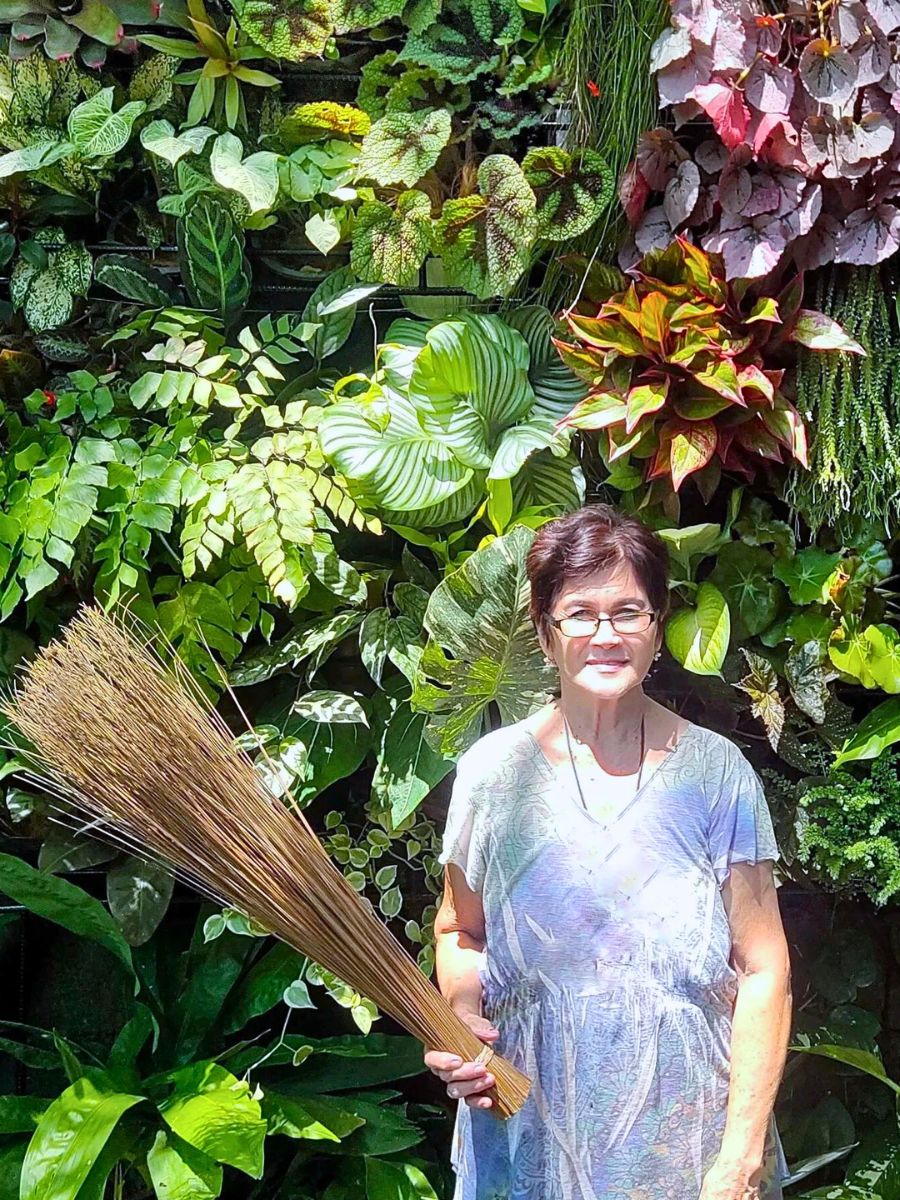
Likewise, prioritize plants known for their air-purifying properties. Such plants will help remove harmful toxins and improve indoor air quality, enhancing the general therapeutic experience. Humidity regulation is also essential. Choose plants that thrive in high-humidity environments, as they can help maintain optimal moisture levels in the air. This is a crucial factor for respiratory health and overall well-being. Also, whether it is a well-lit or shaded area, ensure that the selected plants can adapt to the specific lighting conditions of the living wall's location.

With these design guidelines you can, in turn, create a living wall that not only satisfies with its delightful colors and textures but also provides a therapeutic element.
Feature and header image by @livingwall.

